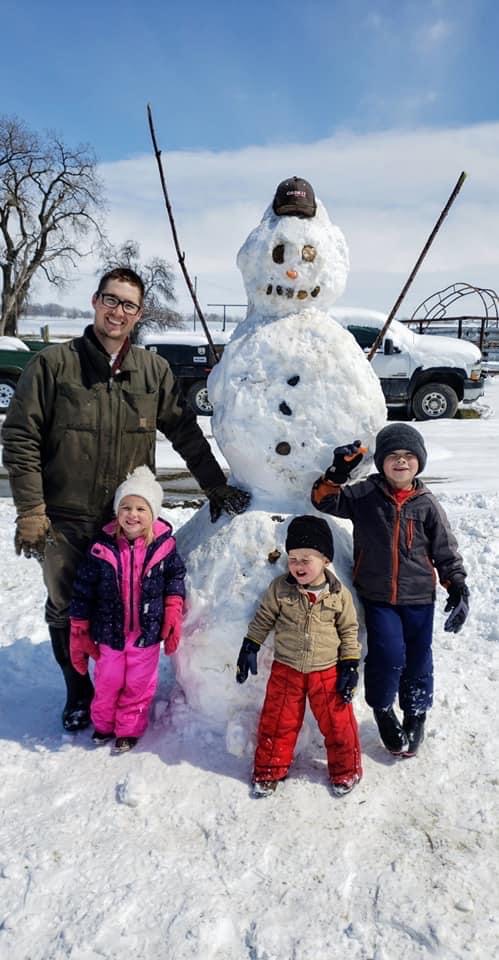
The Children of Cole and Lisa Nicholas of Colome made this snowman on Easter Sunday. On Easter you do not normally think of snow, but Colome received ten inches in the most recent storm.

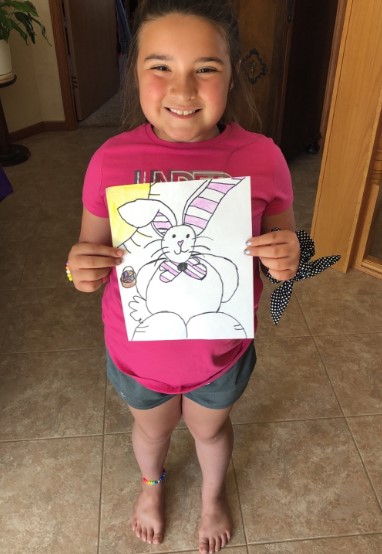
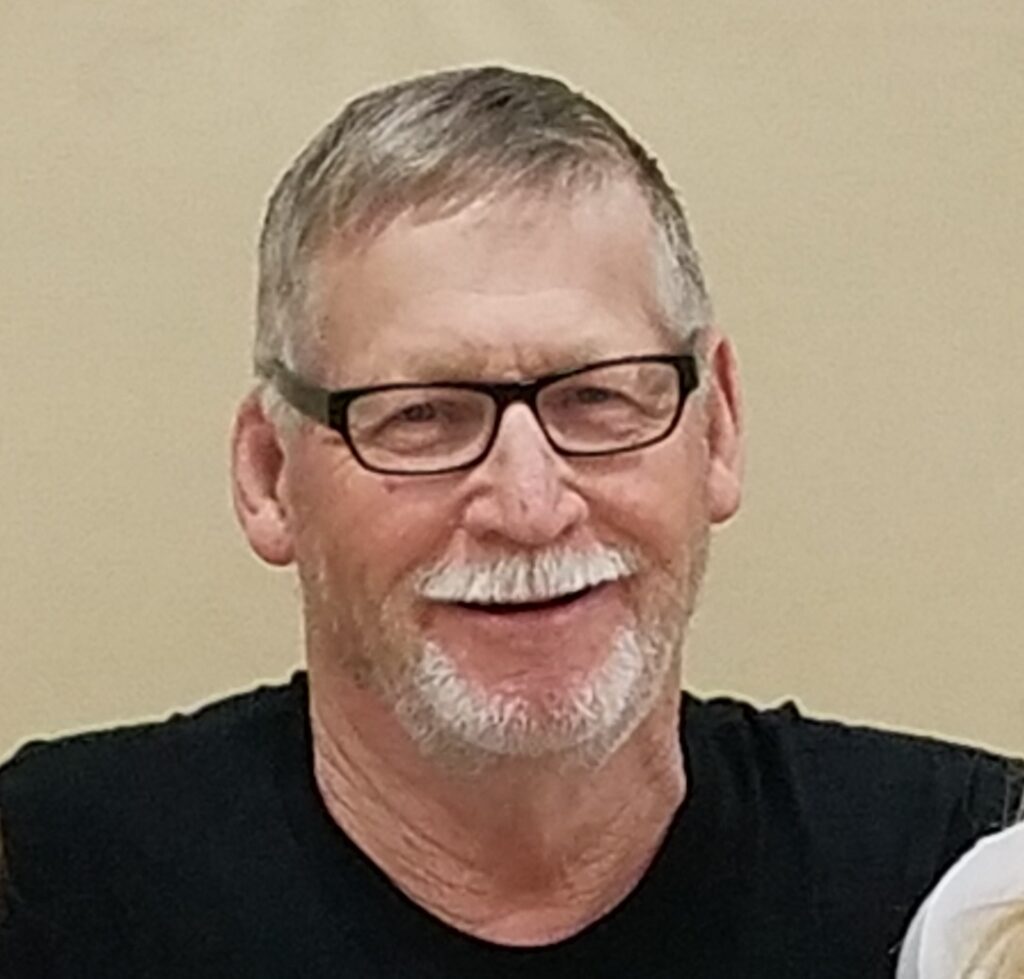
Graveside services for Elton Serr, 79, were held April 8 at the Spotted Tail Cemetery in Jamison,Neb. Burial was in the Spotted Tail Cemetery with military honors by the Burke VFW.
Elton Gary Serr was born on Dec. 14, 1940 in Burke South Dakota to Paul and Winnie (Hitchcock) Serr and he died April 5, 2020 at his home. He was 79 years and 4 months old.
He grew up on the family farm southwest of Jamison, Neb. Elton attended Spotted Tail Country School in Nebraska and graduated from Burke High School in South Dakota in 1958.
After that he attended the University of Nebraska for one year. Golf distracted him a little from college, so he went to work for Bell Telephone in Piedmont South Dakota.
He traveled and had various jobs before he was drafted into the Army in November 1963. Elton was discharged from the Army in November 1965 and came back from Vietnam. This is when he met his future wife.
On Dec. 26, 1966, Elton was united in marriage to Georgia Ann Hamling at the Catholic Church in Bonesteel South Dakota. To this union 4 children were born.
They lived most of their lives on the Serr family farm where he milked cows and farmed.
Elton was a DHIA Supervisor for more than 25 years. He retired from farming in 2014 and moved to Burke. Elton didn’t like the retired life so he started to drive a school bus route for Burke School and drove the swim bus to Bonesteel during the summer.
He continued this until May of 2019. Some of his most loved pastime were golfing, camping and fishing, and going to all of his grandchildren’s sporting events.
He golfed every Thursday for men’s league and would go with his grandchildren whenever he could.
He was a member of the Burke VFW Post 9950, the Herrick Legion, and a member of the Spotted Tail Cemetery board.
Elton was preceded in death by his parents and two brothers-in-law: Charlie Kasson and Russ Cox.
He is survived by his wife Georgia Ann Serr, his children: Tamara and Carter Bull of Newport NE, Todd Serr of Newport NE, Travis and Kathy Serr of Burke SD, and Tom and Tammi Serr of Newport NE.
His sisters: Zone Kasson of Swansea IL and LaVon Cox of Montrose CO, his 12 grandchildren and 1 great-grandchild, and several nieces, nephews, relatives and friends.
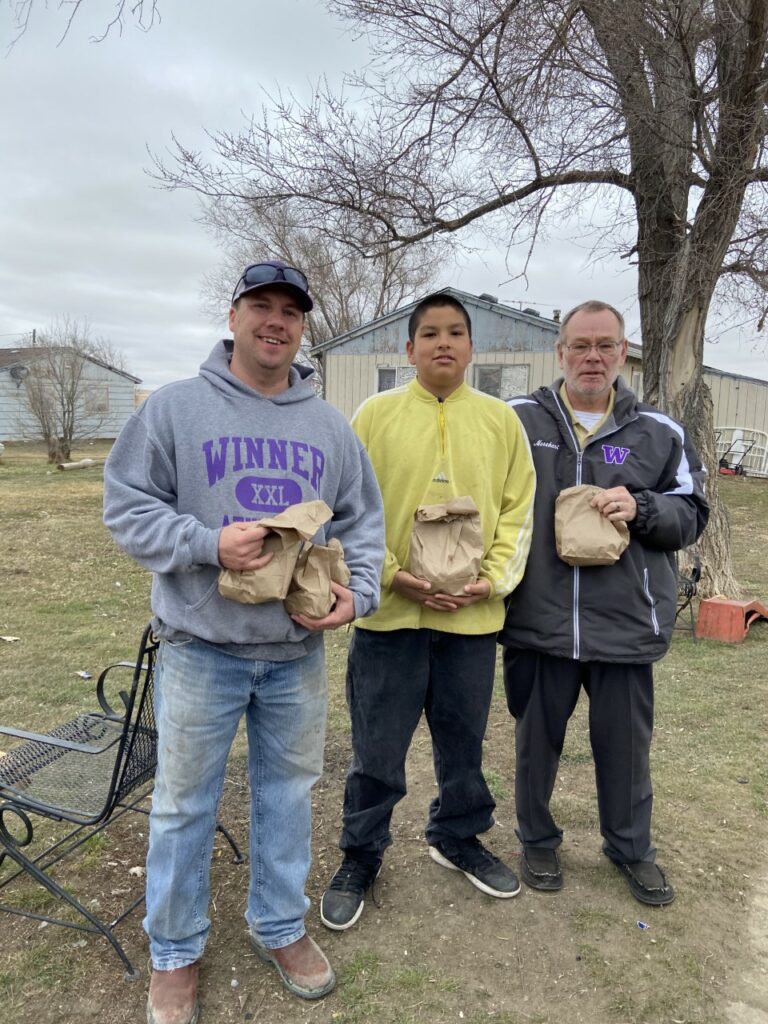
By Sen. John Thune
Hey, parents. I know these are crazy times we’re living in, and many of you have now unexpectedly added “teacher” to your long list of titles, which also likely includes “coach,” “cook,” and “hall monitor.”
Hopefully there haven’t been too many visits to the principal’s office. While I don’t have a solution to everything you’re facing right now, I’ve got something that I hope will at least help.
More on that in a minute, though.
Throughout this coronavirus outbreak, Congress has been focused on providing support and relief to the American people. We’ve already passed, and the president has signed, three relief packages that are already helping families, workers, small businesses, and the country’s health care community.
We’ve prioritized things like ensuring anyone who needs to get tested for the coronavirus can do so at no cost to themselves. We’re making sure that no-strings-attached emergency cash payments make it into Americans’ hands as soon as possible and that small businesses have the support they need to keep their operations open and employees on payroll.
Importantly, doctors, nurses, and other health care professionals are getting additional and much-needed resources to both treat patients and help protect themselves on the front lines of this battle.
Everyone is feeling the effect of this ongoing pandemic, which is why we tried to make it a little easier for graduates to manage their student loan debt. I’m glad a bill I helped write was included in the last relief package the president signed.
It will give employers the option to help graduates pay down student loan debt by up to $5,250 per employee each year tax-free. The new law will also allow graduates to defer payments and interest for six months – penalty-free – on qualified federal student loans.
And for those Americans who are out of work as a result of this crisis, we’re strengthening states’ unemployment benefit programs for those who need them the most.
Our recent efforts have also helped the farming and ranching community, which has faced hurdle after hurdle these last few years.
At my urging, the latest bill replenished the critically important Commodity Credit Corporation and allocated nearly $10 billion in emergency funding to help producers in South Dakota and around the country.
There’s so much support for this effort that I teamed up with U.S. Rep. Dusty Johnson to lead a bipartisan group of senators and members of the House – a group that represents more than 25 percent of the entire Congress – to urge the secretary of the U.S. Department of Agriculture to take immediate action using the resources we provided in the new law.
Everyone is still adjusting to this new lifestyle where social distancing and teleworking are now considered normal, especially parents who’ve now become at-home educators.
Since many schools are closed for the foreseeable future – some for the remainder of the school year – I wanted to do my part to help those parents, students, and teachers who are adjusting to this new at-home learning environment on top of everything else they’re facing these days.
That’s why I decided to record a short video lesson about the basics of the federal government that parents can show to their at-home students or teachers can work into curriculums they might already be using for virtual learning experiences.
I’m hoping it will help provide educators and students with a tiny bit of additional content that could help diversify virtual lesson plans during these unusual times.
If you’re interested in using my video lesson, you can find it on my social media channels, including Facebook and Twitter (@SenJohnThune), or by visiting www.thune.senate.gov/COVID19. If you find it helpful and would be interested in additional lessons, please leave a comment and let me know.
By visiting the same website, you can find additional coronavirus-related updates from me and my staff, plus a ton of helpful links and resources that will help South Dakotans better navigate this crisis. If you can’t find what you’re looking for, call, email, or write, and we’ll get it to you as soon as possible.
We’re learning more and more each day about what bonds us as Americans because we’re all experiencing and coping with this crisis together.
We’re also learning about new ways to contribute to our communities and stay connected with friends and family even when we’re afar. In these uncertain times, I urge you to embody the examples of kindness we’re seeing in South Dakota and around the country and continue to share stories of hope, support, and generosity when you see them.
By Governor Kristi Noem
April 3, 2020
With the COVID-19 situation continuing to be very fluid in South Dakota, it is important for us to remember that this a marathon, not a sprint. In today’s 24/7 news cycle, the information coming at us on TV or social media can easily overwhelm us.
By now, many of you have heard me say that I’m relying on the science, facts, and data to drive the state’s response to the virus. Our team’s decision-making is guided by the realities on the ground in South Dakota, rather than trying to apply a one-size-fits-all approach.
My role with respect to public safety is something I take very seriously. But it’s also important for us to remember that it’s the people themselves who are primarily responsible for their safety.
Under our Constitutions at the state and federal levels, the people have expansive freedoms – they are free to exercise their rights to work, worship, and play – or to stay at home, or to conduct social distancing.
Since the middle of February, I have been very clear that our people need to take their responsibility for personal health and safety seriously – that they should be practicing good public hygiene and social distancing.
And, with few exceptions, the people of South Dakota are doing a tremendous job. We have bent the curve a great deal. We have kept our hospital capacity at a manageable level.
And we continue to push out our peak infection day far into the future.
This is great news, and we must stay the course.
We must remember that the objective here is not to stop the spread of COVID-19; the science tells us that is not possible. What we are trying to accomplish is to slow the spread, and flatten the curve, so that our people and our healthcare system are not overwhelmed.
This will give us more time to develop successful treatments and, hopefully, an effective vaccine.
South Dakota is not New York City, and our sense of personal responsibility, our resiliency, and our already sparse population density put us in a great position to manage the spread of the virus without needing to resort to the kinds of draconian shutdowns adopted by big coastal cities or even other countries.
Jointly, with Department of Health officials as well as officials from each of the three hospital systems (Avera, Monument Health, and Sanford Health), our team has illustrated exactly what our projections look like for the next several months.
Now, given the fluidity of the situation, our estimates are dynamic, not static. As the situation on the ground changes, we will continue to be flexible in our response to that new information.
My team has been thoughtful, strategic, and guided by the science, facts and data from what is happening on the ground here, in South Dakota, since January.
These new estimates are a guide. We will continue to refine them as we learn more about this virus and it’s impact on our state.
Again, I want to thank the people of South Dakota for doing everything they have thus far. Together, we will get through this.
[To review our current projections for COVID-19 in South Dakota, please visit Covid.SD.Gov .]
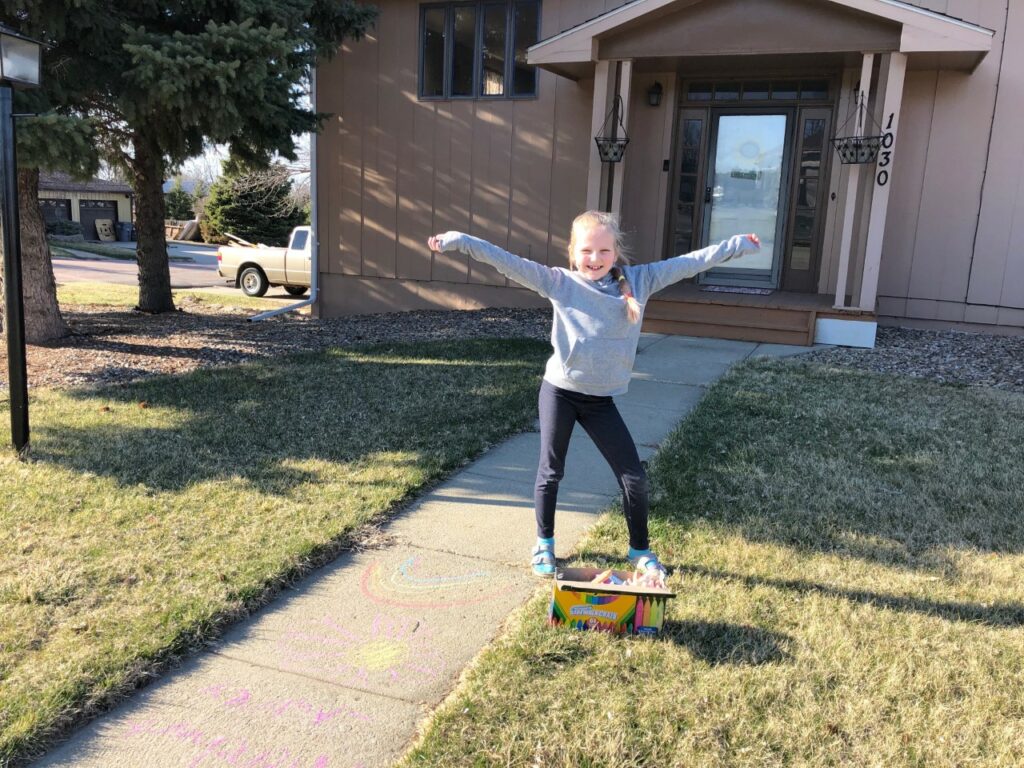
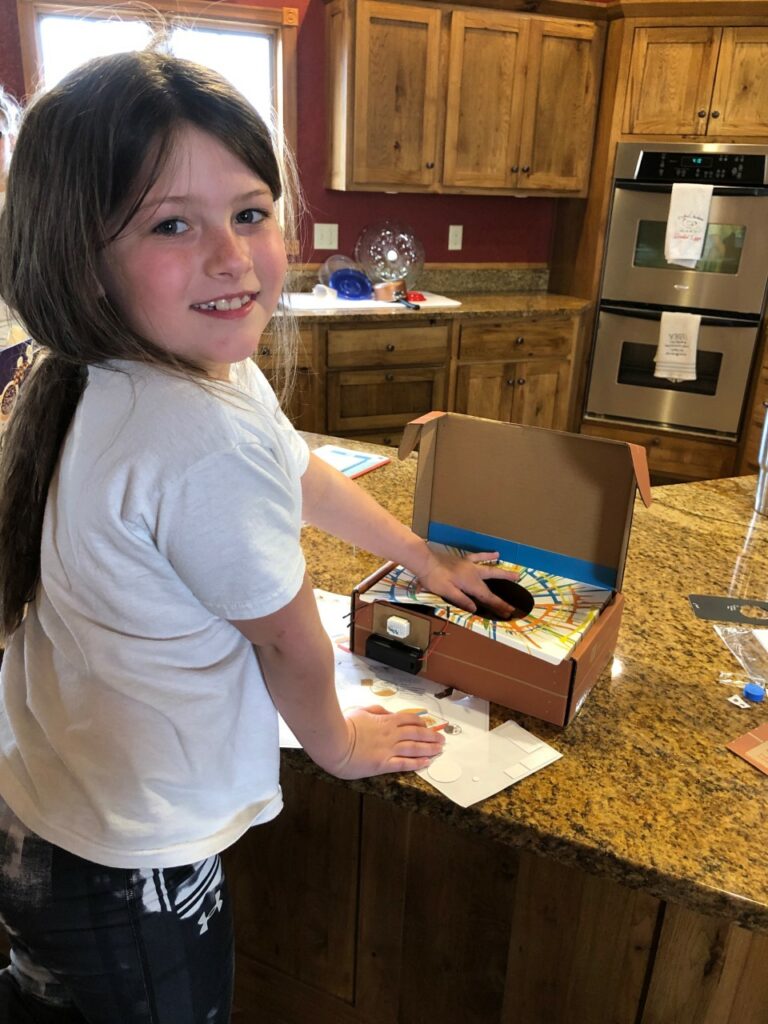
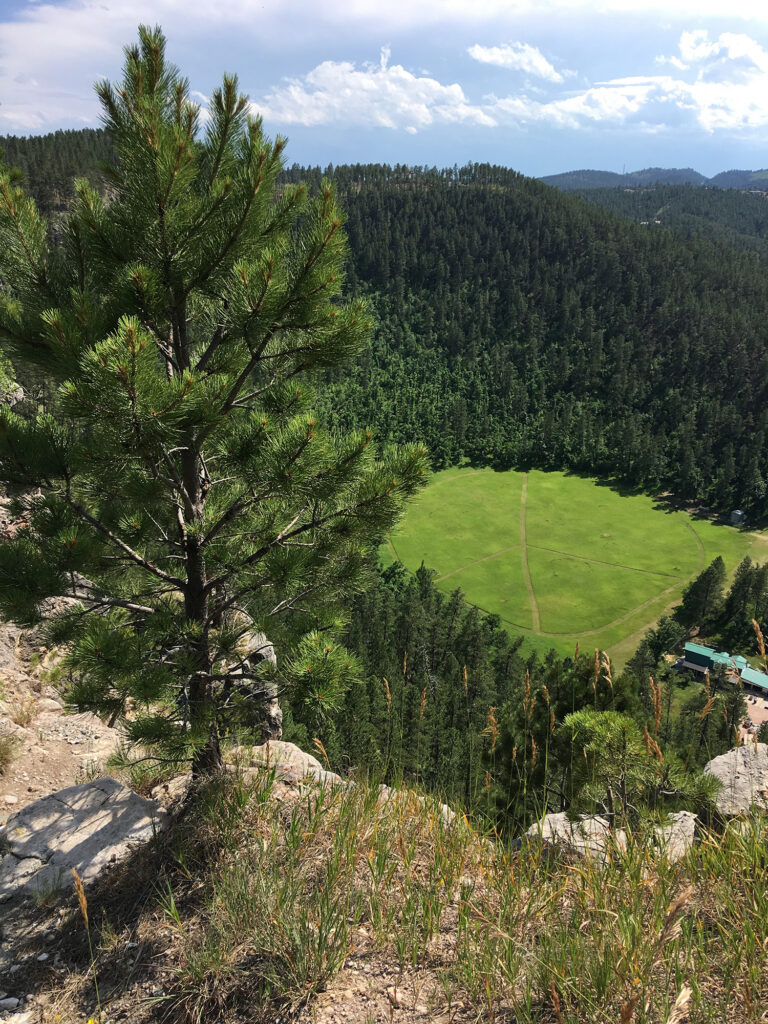
Exploring South Dakota
By John Andrews/ Editor at South Dakota Magazine
The coronavirus has upended lives around the world. Our routines as we knew them just a few short weeks ago no longer exist. Many of us, including the South Dakota Magazine staff, are working from home.
Businesses are shuttered, gatherings of more than 10 people are forbidden and — in the event that folks do need to leave their houses — a 6-foot buffer between humans at the very least must be maintained, all in an effort to slow the spread of the deadly virus.
One refrain that keeps popping up, though, is that the outdoors are never closed. We try to take a walk around Yankton every day that the weather allows (and we all know that the transition from winter to spring in South Dakota can be wildly unpredictable).
The movement and fresh air do wonders for both our physical and mental health. With that in mind, here are three favorite hiking trails that I’ve discovered while on the road. Later, in our July/August issue, we’ll have even more ways you can safely enjoy the outdoors in South Dakota during what is shaping up to be an unprecedented summer.
Stay safe and healthy by exploring these or other trails near you.
Stratobowl Trail
It’s a short and easy hike from busy Highway 16 to the spot where scientists made history in 1935. The Stratobowl Rim Trail begins on a gravel maintenance route about 2 miles west of Bear Country USA (look for a closed gate and maybe a parked car or two).
The path is wide and well maintained, but there are plenty of large rocks along the way, so be sure to have sturdy footwear.
Nearly every step of the 0.8-mile trail follows the well-worn road through the tall pine trees of the Black Hills National Forest. The trail branches off to the left near the end, and a narrower path leads to four granite slabs that tell the story of the Stratobowl balloon launches of 1934 and 1935 that sought to collect information about the upper reaches of the Earth’s atmosphere.
During the second launch, scientists floated more than 72,000 feet into the stratosphere, higher than any human had previously traveled.
An overlook tucked among the limestone cliffs provides a panoramic view of the Black Hills and the bowl below. Plan about an hour for the out and back hike.
Alkali Trail
This short and family-friendly trail takes hikers through a variety of Black Hills landscapes: a creek valley, ponderosa pine forests and prairie meadows, all in the shadow of Bear Butte.
From Interstate 90, take exit 34. Follow a gravel road toward Sturgis known locally as the Old Stone Road or the Fort Meade Backcountry Byway. Around a bend the road crosses Alkali Creek.
After another few hundred feet, you’ll find the gravesite of Black Hills outlaw Curley Grimes. Across the road is a small campground and access to the Alkali Trail.
Grab a brochure at the trailhead and follow along to each of 10 marked posts along the path.
Starting at the creek and progressing through the woods, into a clearing and back, each stop provides a natural history lesson — Native Americans used the green ash trees to fashion poles, bows and arrows; rocks covered with lichens are slowly decomposing into soil; patches of snowberry provide excellent winter cover for deer.
The Alkali Trail is slightly more than half a mile long. Allow about 45 minutes for a leisurely hike.
Gavins Point Nature Trail
The Gavins Point Nature Trail is a family-friendly path within the Lewis and Clark Recreation Area, about 9 miles west of Yankton. A kiosk at the trailhead offers brochures that explain the types of trees and insects found in the forest.
Kids can use them as a scavenger hunt guide as they traverse the 1.2-mile dirt path. They’ll have fun identifying the Eastern red cedars, bur oaks and old cottonwoods that grow thick along the Missouri River bluffs, and the millipedes and spiders that crawl around the undergrowth.
Adults will appreciate the exercise. Two wooden bridges, a set of stairs and several inclines account for the trail’s moderate rating.
About halfway through, hikers are rewarded with a magnificent view of the shimmering water and chalkstone bluffs of Lewis and Clark Lake.
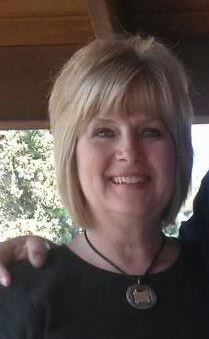
By Marsha Risseeuw
We are feeling it, the stress and anxiety of living in a very different world. In fewer than 100 days our lives have become something that we don’t understand, that makes us fearful, that makes us ask a lot of questions.
A few of the obvious indicators include a feeling of restlessness, hyperventilating, difficulty concentrating, a general sense of irritation.
Anxiety is a natural response to stress, but, let’s take a clue from the people around us who encourage us to not give into these dark forces.
I say to all of you, grab your cup of coffee, put on a smile and make this day great.
One lady in our community has found a way to help us do just that. Anna Hockett Nesseth began sharing one of her many talents with us on Facebook. With little technical experience, Anna set up the phone camera in her living room next to her much loved piano and let the music flow.
Two miracles happened, her music and her connecting to Facebook.
For the rest of the story, pick up this week’s edition of the Winner Advocate or subscribe to the Winner Advocate at 1-605-842-1481!